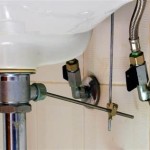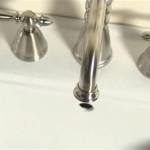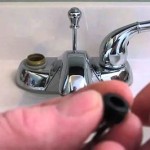How To Remove Bathroom Paint From Tiles
Dealing with unwanted paint on bathroom tiles is a common issue that homeowners and renovators often encounter. Whether it's from a sloppy painting job or an accidental spill, removing paint from tile requires patience and the right techniques to avoid damaging the tile surface. Different types of paint and tile materials will require tailored approaches, making it crucial to identify both before beginning the removal process. The goal is to effectively remove the paint while preserving the integrity and appearance of the underlying tile.
The success of paint removal depends heavily on several factors. The type of paint—whether it’s latex, oil-based, or acrylic—determines the appropriate solvents and methods. The type of tile—ceramic, porcelain, or natural stone—dictates the acceptable cleaning agents and scrubbing techniques. Abrasive cleaners or harsh solvents can scratch or etch certain tile surfaces, particularly natural stone. Furthermore, the age of the paint stain plays a significant role. Fresh paint is generally easier to remove than paint that has had time to cure and bond with the tile surface. Careful consideration of these factors will significantly increase the likelihood of a successful and damage-free paint removal.
Preparing for Paint Removal
Before commencing any paint removal efforts, thorough preparation is essential. This includes gathering the necessary tools, cleaning materials, and protective gear. The workspace should be adequately ventilated to avoid inhaling fumes from cleaning agents. Protecting surrounding surfaces is also crucial to prevent further paint splatters or damage from solvents. A well-prepared workspace streamlines the removal process and minimizes the risk of accidents or unintended consequences.
Start by carefully assessing the situation. Determine the type of paint, the type of tile, and the extent of the paint coverage. This information will inform the choice of removal method and cleaning agents. It is always advisable to test any cleaning solution in an inconspicuous area first to ensure it does not damage or discolor the tile. This simple precaution can save significant time and effort in the long run, preventing irreversible damage to the bathroom tiles.
Assemble the necessary tools and supplies. These may include: plastic drop cloths, painter's tape, safety glasses, gloves, a plastic scraper, soft cloths or sponges, a stiff-bristled brush (non-metallic), a heat gun or hair dryer (optional), mineral spirits or paint thinner (for oil-based paint), rubbing alcohol (for latex paint), baking soda, vinegar, and a bucket of warm water. Ensure that all cleaning agents are compatible with the tile material and appropriate for the type of paint being removed.
Protect the surrounding areas. Cover the floor and nearby fixtures with plastic drop cloths, securing them with painter's tape. This will prevent any drips or splatters from damaging these surfaces. Wear safety glasses and gloves to protect your eyes and skin from cleaning agents. Proper preparation minimizes the risk of injury and prevents further damage to the bathroom.
Methods for Removing Paint
There are several methods for removing paint from tiles, each with varying degrees of effectiveness depending on the type of paint, the type of tile, and the age of the paint. The chosen method should be the least aggressive necessary to achieve the desired result. Starting with gentler methods and gradually progressing to more aggressive ones minimizes the risk of damaging the tile surface.
Warm Water and Dish Soap: This is the gentlest method and is often effective for removing fresh, water-based paint splatters. Mix a solution of warm water and mild dish soap. Apply the solution to the paint stain and let it soak for a few minutes. Then, gently scrub the area with a soft cloth or sponge. Rinse thoroughly with clean water. This method is suitable for initial cleanup and may be sufficient for removing small amounts of fresh paint.
Rubbing Alcohol: Rubbing alcohol is an effective solvent for removing latex paint. Soak a cotton ball or cloth with rubbing alcohol and apply it to the paint stain. Let it sit for a few minutes to loosen the paint. Then, gently scrub the area with a soft cloth or sponge. For stubborn stains, use a plastic scraper to carefully lift the paint. Rinse thoroughly with clean water. This method is generally safe for most tile surfaces but should still be tested in an inconspicuous area first.
Baking Soda Paste: Baking soda is a mild abrasive that can help remove paint without scratching the tile. Mix baking soda with water to form a thick paste. Apply the paste to the paint stain and let it sit for a few minutes. Then, gently scrub the area with a soft cloth or sponge. Rinse thoroughly with clean water. Baking soda is a good option for removing paint from more delicate tile surfaces, such as natural stone.
Vinegar: Vinegar is a mild acid that can help dissolve paint. Heat a small amount of white vinegar in a microwave or on the stovetop until it is warm but not boiling. Apply the warm vinegar to the paint stain and let it sit for a few minutes. Then, gently scrub the area with a soft cloth or sponge. Rinse thoroughly with clean water. Vinegar is effective for removing both latex and oil-based paint, but it is essential to test it in an inconspicuous area first, as it can etch some tile surfaces.
Mineral Spirits or Paint Thinner: Mineral spirits and paint thinner are effective solvents for removing oil-based paint. Dampen a cloth with mineral spirits or paint thinner and apply it to the paint stain. Let it sit for a few minutes to loosen the paint. Then, gently scrub the area with a soft cloth or sponge. For stubborn stains, use a plastic scraper to carefully lift the paint. Rinse thoroughly with clean water and then wash the area with soap and water to remove any residual solvent. Mineral spirits and paint thinner are flammable and should be used with caution in a well-ventilated area.
Heat Gun or Hair Dryer: A heat gun or hair dryer can be used to soften paint, making it easier to scrape away. Hold the heat gun or hair dryer a few inches away from the paint stain and apply heat in a circular motion. Be careful not to overheat the tile, as this can cause it to crack. Once the paint is softened, use a plastic scraper to carefully lift the paint. This method is particularly effective for removing thick layers of paint or paint that has been allowed to cure for a long time.
Dealing with Stubborn Paint Stains
Sometimes, paint stains can be particularly stubborn and resistant to conventional removal methods. In these cases, more aggressive techniques may be necessary. However, it is crucial to proceed with caution to avoid damaging the tile surface. Using the following methods carefully and selectively, after exhausting the gentler options, can help resolve challenging paint removal situations.
Commercial Paint Removers: There are numerous commercial paint removers available on the market, specifically designed for removing paint from various surfaces. These products typically contain powerful solvents that can effectively dissolve paint. Always follow the manufacturer's instructions carefully and test the product in an inconspicuous area before applying it to the entire stain. Wear appropriate protective gear, including gloves and safety glasses, and ensure the area is well-ventilated. Commercial paint removers should be used as a last resort due to their potential to damage certain tile surfaces.
Razor Blade Scraper: A razor blade scraper can be used to carefully scrape away stubborn paint stains. However, this method should only be used on smooth, non-porous tile surfaces, such as ceramic or porcelain. Hold the razor blade at a shallow angle to the tile surface and gently scrape the paint away. Be careful not to apply too much pressure, as this can scratch the tile. Always test this method in an inconspicuous area first to ensure it does not damage the tile.
Professional Assistance: If all else fails, consider seeking professional assistance. Professional tile cleaners have the expertise and equipment to remove stubborn paint stains without damaging the tile. They can also provide valuable advice on how to maintain the tile and prevent future paint stains. Hiring a professional can be a worthwhile investment, especially for delicate or valuable tile surfaces.
After removing the paint, thoroughly clean the tile surface with a mild detergent and water to remove any residual cleaning agents. Inspect the tile for any damage, such as scratches or discoloration. If necessary, apply a tile sealant to protect the tile and prevent future stains. Regular cleaning and maintenance will help keep the bathroom tiles looking their best.
In summary, removing paint from bathroom tiles requires careful preparation, the right tools and cleaning agents, and a systematic approach. By identifying the type of paint and tile, choosing the appropriate removal method, and proceeding with caution, it is possible to effectively remove paint stains without damaging the tile surface. The key is to start with gentler methods and gradually progress to more aggressive ones, always testing in an inconspicuous area first. With patience and attention to detail, bathroom tiles can be restored to their original beauty.

How To Remove Paint From Grout And Tile Sawdust Girl

How To Remove Paint From Tiles

How To Remove Paint From Grout And Tile Sawdust Girl

How To Remove Paint From Tile 3 Easy Diy Methods Bob Vila

How To Remove Dried Paint From Tile And Grout Remover

How To Remove Paint From Grout And Tile Sawdust Girl

The Best Way To Remove Old Shower Tile

Yes You Can Paint Shower Tile And It Won T L Porch Daydreamer

Should I Paint That Tile

Nitpicky 6 Month Painted Tile Update House Mix
Related Posts







